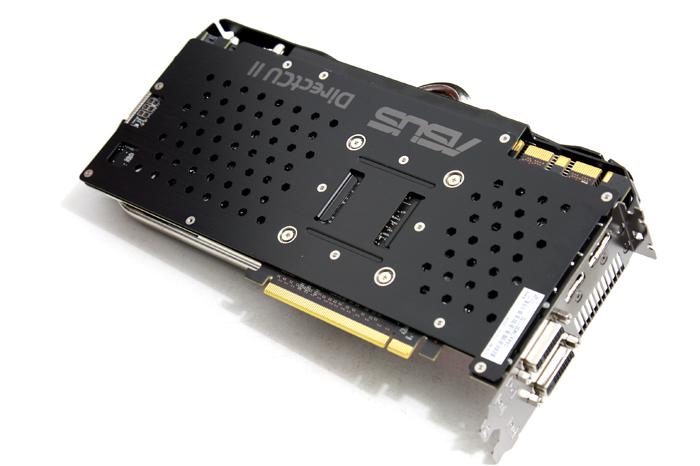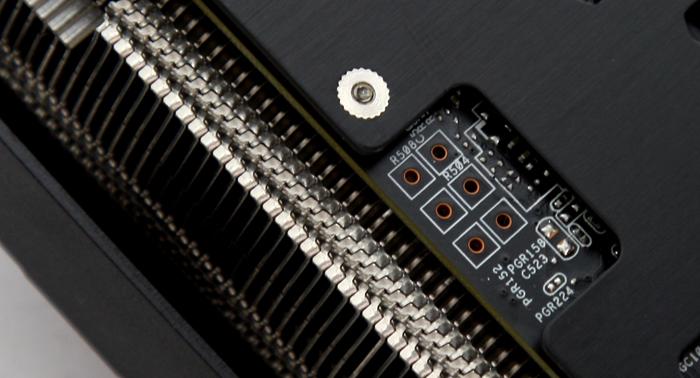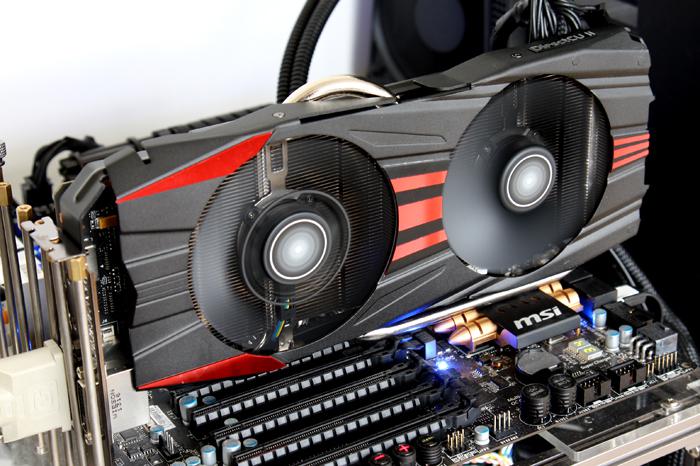Product Showcase
Product Showcase
If we rotate the card and look at the backside we can see two SLI connectors, so in theory four cards in quad-SLI GPU mode are supported. Quad SLI however is difficult and often a maze of driver problems, Nvidia has never really recommended and actively supported quad-SLI. But for a handful of benchmarks and sheer e-peen, it will work OK'ish. We really recommend to go with a maximum of 2 maybe three cards. The GTX 780 DC 2 is built with 8+2 phase power delivery, ensuring ample room for experimental performance tuning. The reference cards have a 6+2 Phase design.
The DIGI+ VRM digital voltage regulation design augments precision overclocking capabilities, which are further supported by the use of hardened Super Alloy Power components. The Super Alloy Power technology on ASUS graphics cards use a special alloy formula which is highly-magnetic, heat-resistant and anti-corrosive. It delivers a more stable and quieter operation compared to the reference design. DIGI+ VRM, unlike traditional analog design, is embedded with digital settings to adjust voltage according to different overclocking scenarios. The photo above reveals access point for VGA hotwiring.
For the GeForce GTX 780 launch we'll have multiple articles ranging from single GPU to 2-way SLI. We'll also look at performance based on high-end yet more moderate processors and then on the X79 platform with an overclocked Core i7 3960X running at 4600 MHz. Here we see the ASUS card (you can find it under SKU code GTX780-DC2OC-3GD5) installed on our test bench.
That's it for this photoshoot though. We need to tell you a tale or two about the GPU and the architecture of course.





